When white Americans refer to “pickles,” they are usually talking about vinegary, sour cucumbers, but that’s a narrow, ahistorical understanding of fermented vegetables. Pickles originated in the East as a form of food preservation. One of the prime purveyors of pickles you may not be thinking about? Japan.
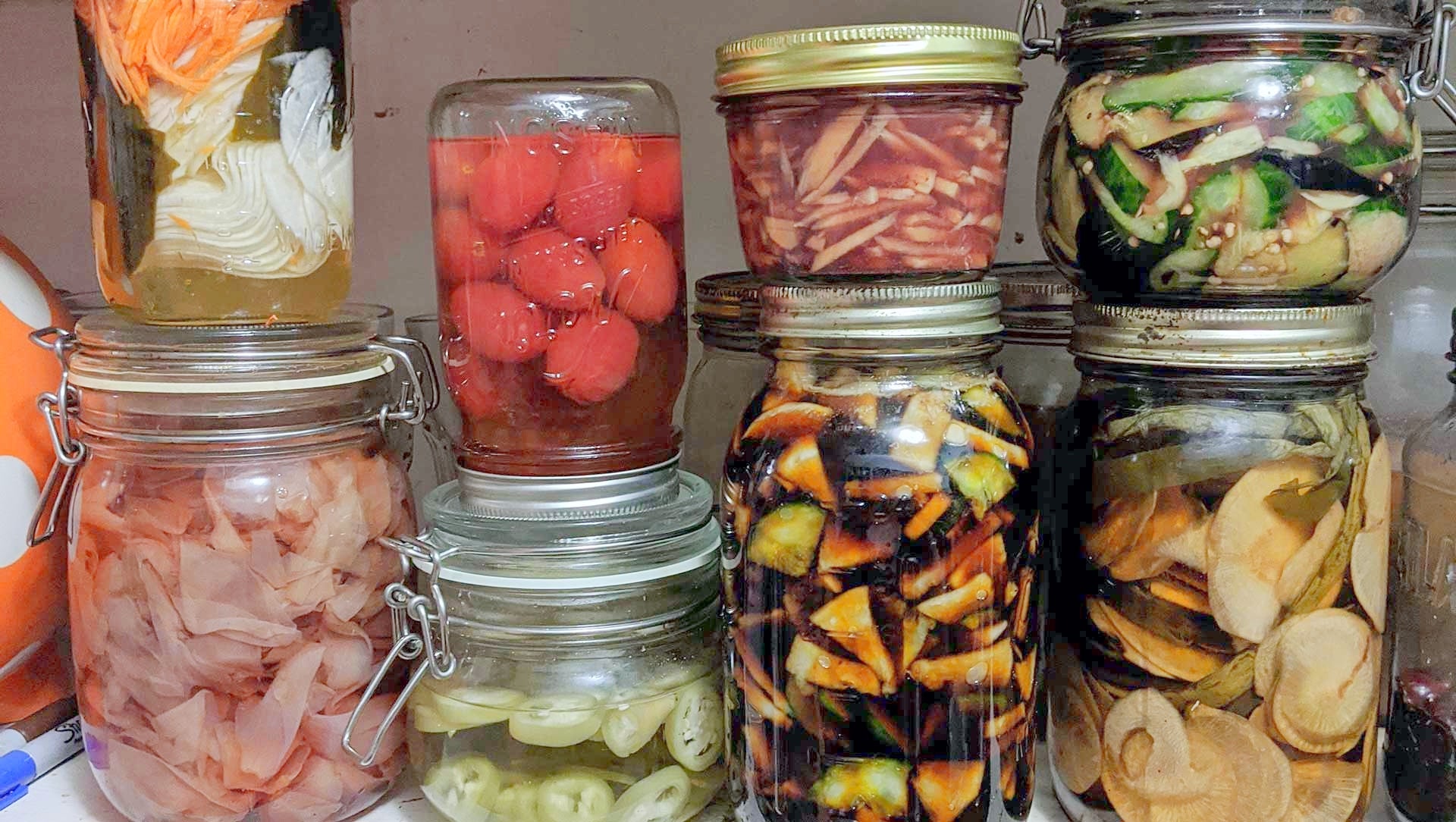
Japanese pickles cover a startlingly wide array of preservatives — shiozuke (salt), shoyuzuke (soy sauce), misozuke (miso), kasuzuke (sake lees), or shibazuke (shiso) — the variety is endless and delicious. These pickles cover a range of flavour profiles one doesn’t usually get with the typical white American pickle experience, and it’s always disappointing to me how few Japanese restaurants offer tsukemono (pickles). When you see them on a menu, always order them.
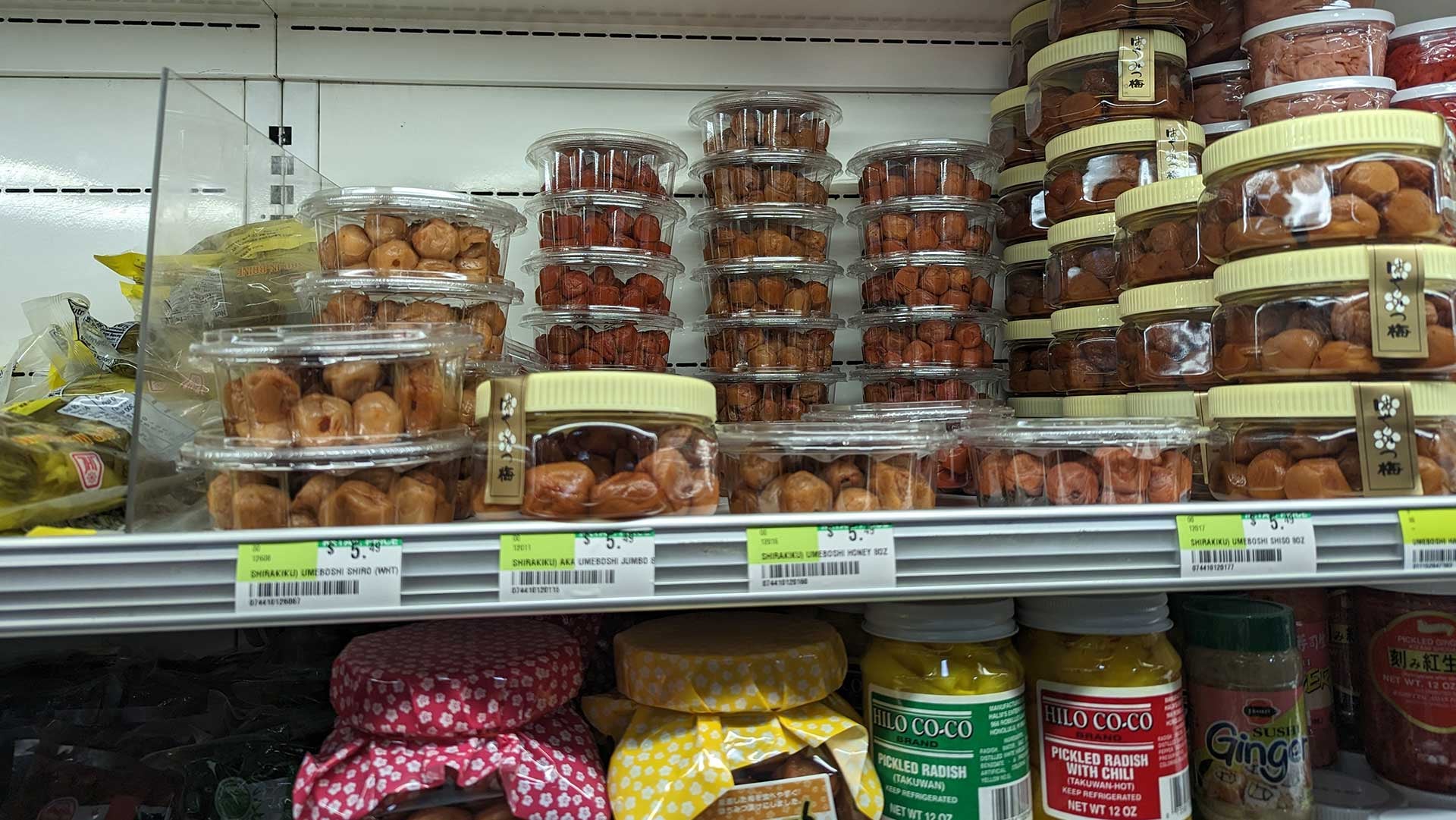
Nukazuke and nukadoko (nuka beds) have a long history in Japanese culture
Out of all of the pickles I’ve mentioned, none possess the legendary flavour of nukazuke (rice bran pickles). Rice bran is a byproduct of refining rice — it’s the outer layer of the rice itself — and it’s long been thought to have some nutritional value. In Japanese culture, that rice bran is fermented and used to create nuka beds. When vegetables are placed in the bed, they are effectively pickled by the fermentation process, really quickly.
But nuka beds are far more interesting than other pickling mediums, because they are an active ferment. Like your sourdough starter, they are prized family members, and families often travel with their nuka beds so they can care for the beds and make pickles wherever they go, to be good houseguests.
How to make a nuka bed
Most Japanese groceries, carry rice bran. You can either buy it without any additives, or already seasoned with salt and seaweed, so all you have to do is add water. It comes in a bag, and because the rice bran is not yet fermenting, it’s shelf stable.
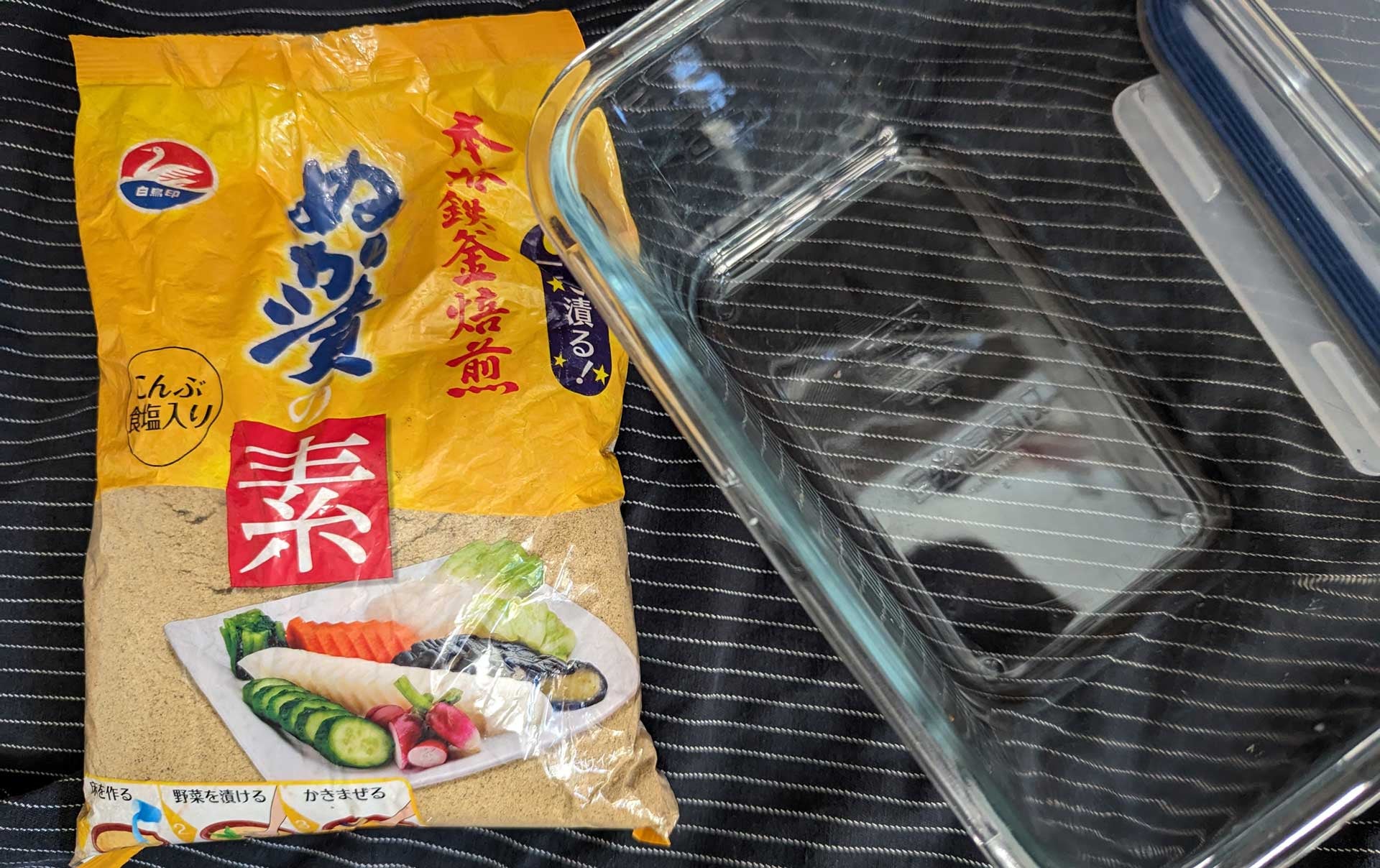
Assuming you start with plain rice bran, you’ll empty a bag into a glass container and add non-iodized salt. Add 13-15% of the weight of the bran. Use 13% if you’re in a cooler climate, and 15% in warmer climates. Now add three cups of filtered water for every pound of rice bran and mix with your clean hands, not a utensil. Make sure it is all incorporated. The consistency should feel like something in between a paste and wet sand.
Next, you’ll add aromatics, and possibly a fermentation starter. If you know someone with a nuka bed, they can give you a bit of it to start your own, like with sourdough starters. If your favourite restaurant offers nukazuke, ask the chef about it; they might be delighted by your interest and willing to offer you a starter.
To flavour your bed, you want to add garlic cloves, ginger peels, kombu, chillies, and apple peels. Each serves a different purpose– apples add sweetness, kombu adds umami, and chilies keep pests away. Mix these into the bed and ensure they are fully covered by the nuka.
Fermentation usually happens on its own, but you can kickstart it with beer or bread, by adding small amounts to the nuka bed. For beer, add a tablespoon or two and mix it in; for bread, simply bury some small pieces in the bed, making sure they’re covered.
Put the lid on your nuka bed, and let it sleep overnight.
How to care for your nuka bed
The key to keeping your bed happy is to turn it every day. Twice a day if it’s really muggy and hot. Remember, ideal fermentation happens between 15-25°C, so you want to keep your nuka bed somewhere dark and cool, between those temperatures.
Once a day, turn your nuka with freshly washed hands. Mix it up, make sure everything in it is covered with nuka, then pat it down. The natural and good bacteria on your hands is what helps ferment the nuka bed. Give it a sniff once a day too; if it starts to smell yeasty, you’re not turning it enough.
How to use your nuka bed
Let the aromatics and fermenters hang out in your bed for a week, then remove them and start adding vegetables. It may take a while for them to pickle at first, but that speeds up over time. The more vegetables you ferment, the better your nukazuke will taste and the faster your bed will work.
To start, take some radishes, make sure they’re clean, and push them into the bed. Cover completely with rice bran and let ferment. Taste one every day as you turn the nuka, and return the rest to the bed. Once your reach that perfectly pickled sweet spot, remove the rest of the radishes and enjoy. You can do this with carrots, cabbage, cucumbers, pea pods, and all kinds of vegetables. The thinner they are, the faster they pickle.
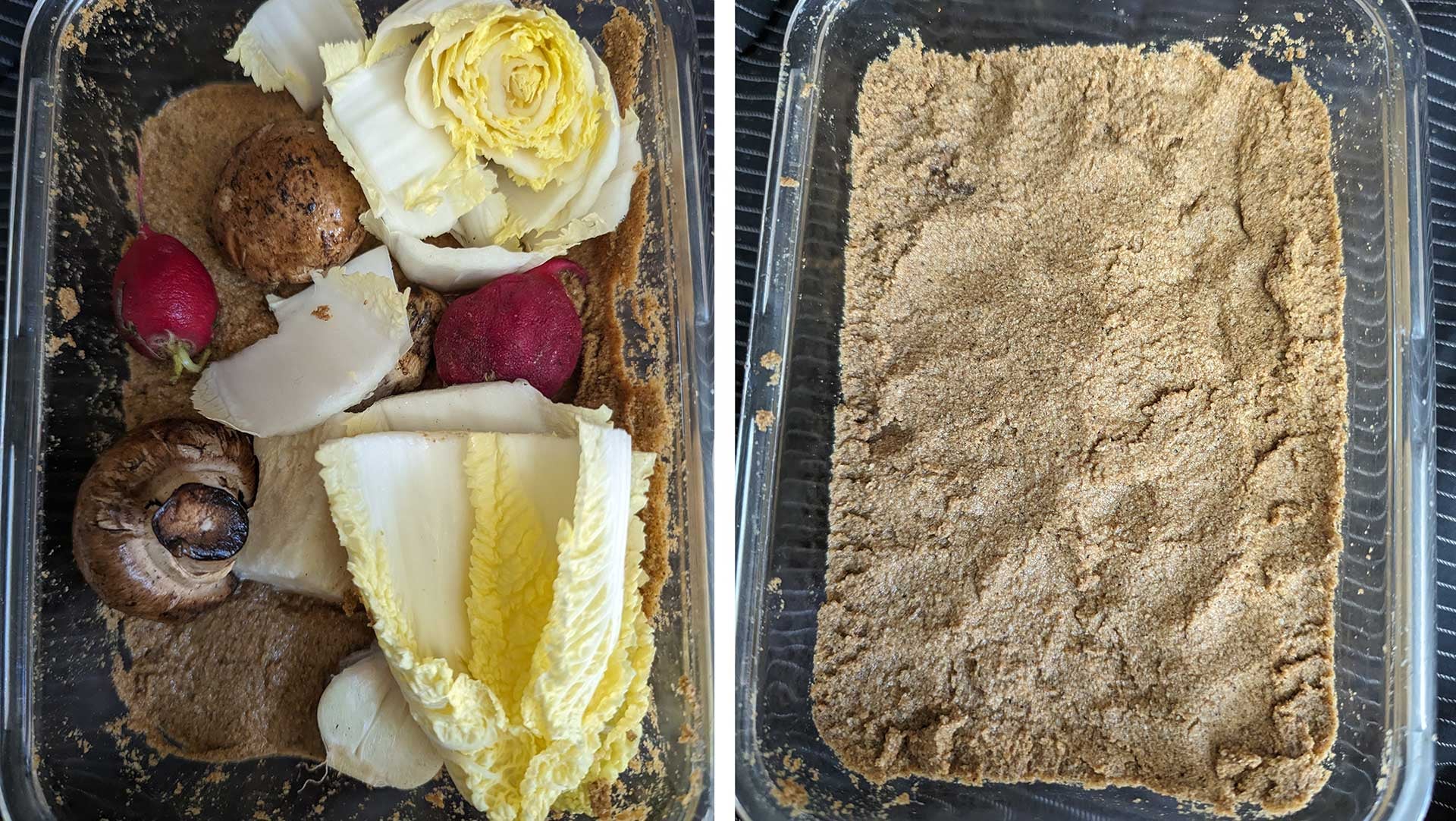
As you pull vegetables out, dust off the nuka and give them a quick cold water rinse. They should be a little limp, as some of their water was drawn out of them by the salt in the bed, but still crunchy. They should be tangy, not just salty. If they are just salty, your bed isn’t fermenting, and you should kickstart it with bread or beer. You also don’t want to leave vegetables in there too long, because they will become too salty and can ruin the bed if they ferment too much.
How to put your bed to sleep
If you’re travelling and decide you don’t want to tote your nuka along, you can remove all the vegetables, pack the nuka down in the glass container, sprinkle the top with salt, and put it in the back of the fridge. That should stop the fermentation process long enough for you to vacation. When you return, remove the salt and keep the nuka outside of the fridge. The warmer temperature should kick start the fermentation, letting you pick(le) back up where you left off.
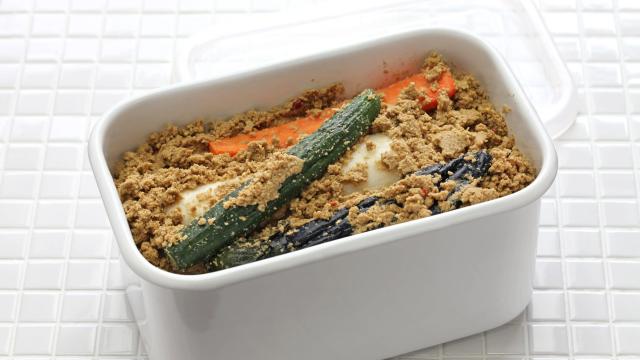
Leave a Reply
You must be logged in to post a comment.